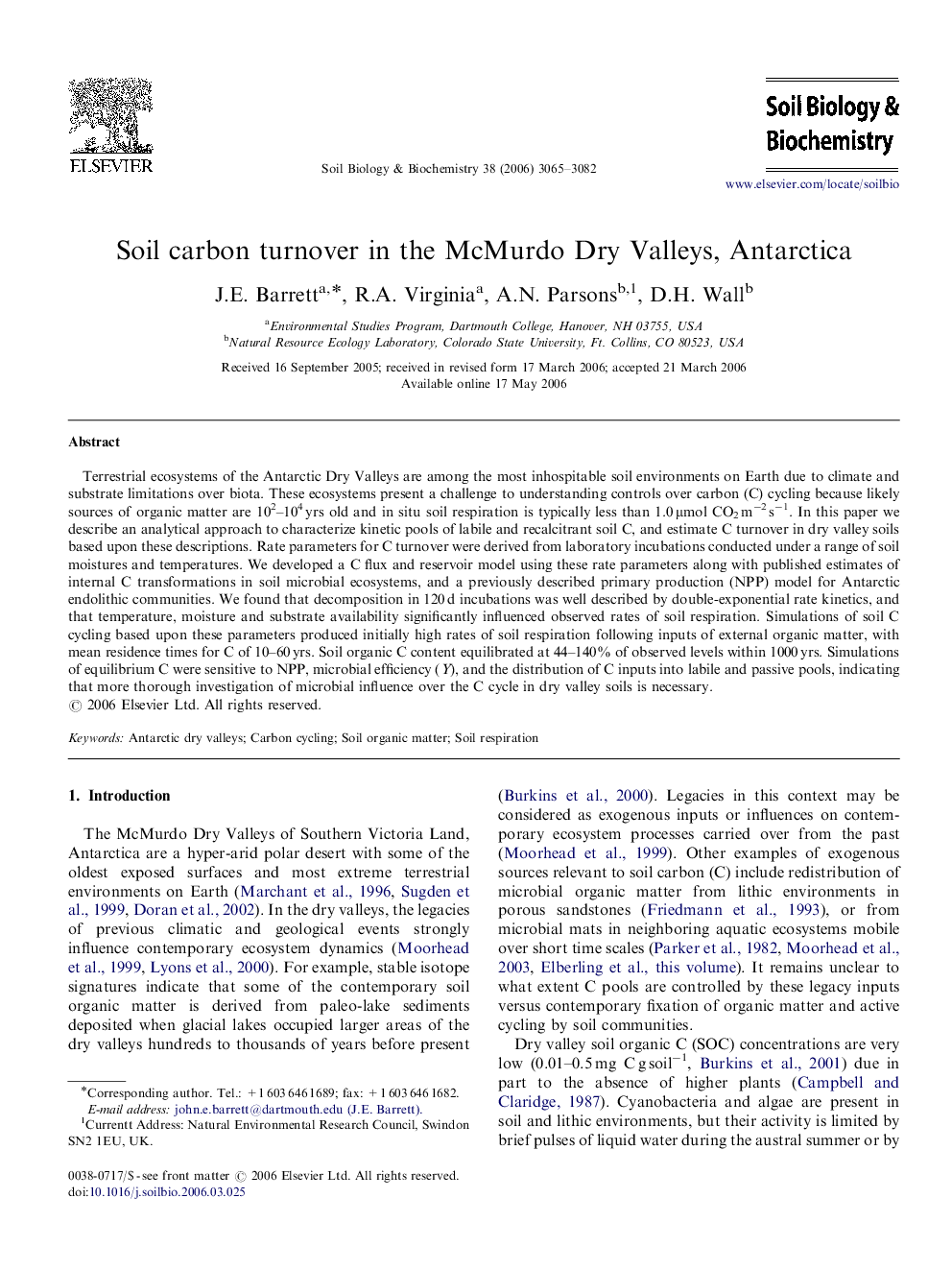| کد مقاله | کد نشریه | سال انتشار | مقاله انگلیسی | نسخه تمام متن |
|---|---|---|---|---|
| 2026164 | 1070021 | 2006 | 18 صفحه PDF | دانلود رایگان |

Terrestrial ecosystems of the Antarctic Dry Valleys are among the most inhospitable soil environments on Earth due to climate and substrate limitations over biota. These ecosystems present a challenge to understanding controls over carbon (C) cycling because likely sources of organic matter are 102–104 yrs old and in situ soil respiration is typically less than 1.0 μmol CO2 m−2 s−1. In this paper we describe an analytical approach to characterize kinetic pools of labile and recalcitrant soil C, and estimate C turnover in dry valley soils based upon these descriptions. Rate parameters for C turnover were derived from laboratory incubations conducted under a range of soil moistures and temperatures. We developed a C flux and reservoir model using these rate parameters along with published estimates of internal C transformations in soil microbial ecosystems, and a previously described primary production (NPP) model for Antarctic endolithic communities. We found that decomposition in 120 d incubations was well described by double-exponential rate kinetics, and that temperature, moisture and substrate availability significantly influenced observed rates of soil respiration. Simulations of soil C cycling based upon these parameters produced initially high rates of soil respiration following inputs of external organic matter, with mean residence times for C of 10–60 yrs. Soil organic C content equilibrated at 44–140% of observed levels within 1000 yrs. Simulations of equilibrium C were sensitive to NPP, microbial efficiency (Y), and the distribution of C inputs into labile and passive pools, indicating that more thorough investigation of microbial influence over the C cycle in dry valley soils is necessary.
Journal: Soil Biology and Biochemistry - Volume 38, Issue 10, October 2006, Pages 3065–3082